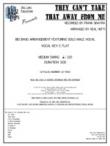ROSE BUD
Recorded by The Count Basie Orchestra
Arranged by Neal Hefti, Prepared by Dylan Canterbury, Rob DuBoff, and Jeffrey Sultanof

Cat #: JLP-7737
$75.00This item usually ships within 1 business day.
Questions?
Please call +1-518-587-1102 or email us.
Edition: Jazz Big Band Arrangement
Description: Swing - Medium Easy
Publisher: Jazz Lines Publications
Written for the Count Basie Orchestra's 1962 album "On My Way & Shoutin' Again!," Neal Hefti's "Rose Bud" is yet another wonderful entry into the sizable catalog of arrangements he crafted for the Basie band. Due to its lack of improvised sections and overall gentle difficulty curve, it works as a perfect introduction to the Basie sound for younger and less experienced ensembles.
Per usual, the arrangement starts with a four bar piano introduction to set up the gently swinging tempo. The melody is a simple but highly catchy riff, a trademark of Hefti's that would serve him well in his burgeoning career writing for film and television. The melody alternates being played back and forth by the full group and a reduced ensemble of tenor sax, harmon-muted trumpet and bucket-muted trombone. Make sure that all articulations and an overall sense of relaxation remains consistent while being passed back and forth between sections.
The spotlight gets shifted completely to the horn trio (handled by Eric Dixon, Al Aarons and Benny Powell on the original recording) beginning at measure 45. The rest of the ensemble engages in some call-and-response with the trio at measure 53, and should play at an appropriately subdued level to match intensity and feel. Take note of the trio's figure at measures 61-62 - it's a classic Harry "Sweets" Edison lick, so be sure to research his playing to know how to play it properly.
The volume of the chart should never exceed a medium level until measure 77, where the trio and full ensemble continue to jab back and forth at one another. The groove, however, is a hard-pounding backbeat rather than the gentle swing that has been going on to this point. This higher intensity doesn't last long, though, as the band slowly begins to decay beginning at measure 83 to a soft, but clipped and punctual ending.
This publication is not a transcription - it has been prepared from the original set of parts used during the 1962 recording session. The 4th trombone part was added at a later date, and should thus be considered optional.
2 Alto Saxophones
2 Tenor Saxophones
Baritone Saxophone
4 Trumpets
4 Trombones (Trombone 4 Optional)
Guitar
Piano
Bass
Drums
Trumpet 4: Bb5
Trombone 1: E4
Trombone 3: Ab4








